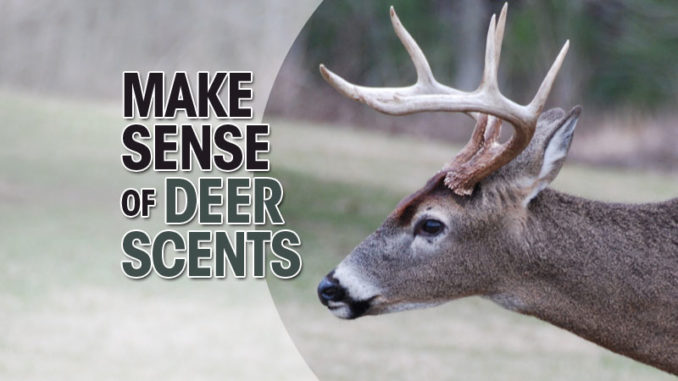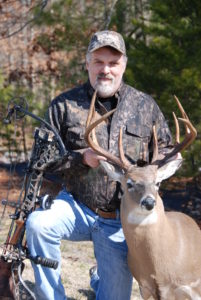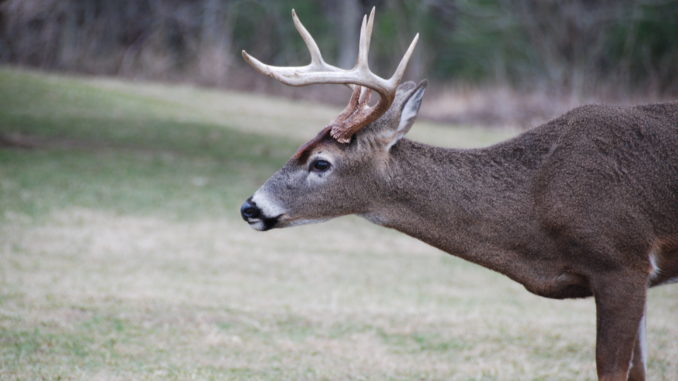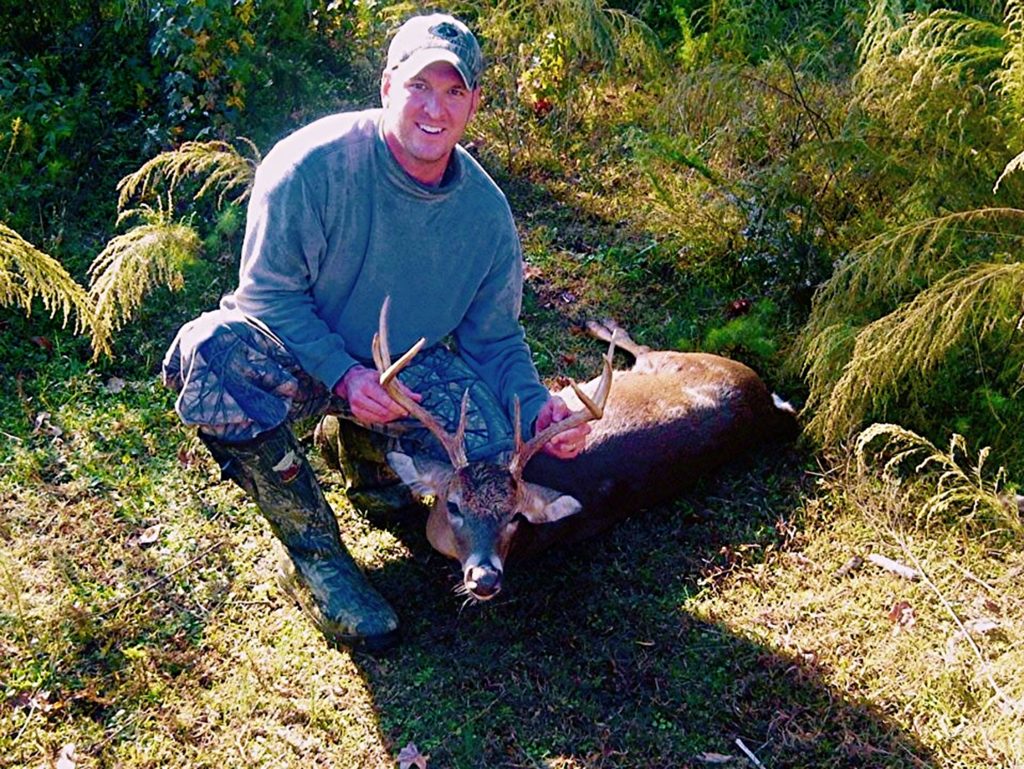
For a deer in a deer’s world, you just follow your nose, It’s not so easy, however, if you’re a hunter. Learn how to use scents to your advantage.
Is there any doubt that a deer’s ability to smell at great distances is it’s greatest defense?
Stop for a minute and think back over whatever history you might have with whitetails in the woods. How many times did a deer see you, or see something out of the ordinary and though it may eventually have fled, it took a little extra time to take a second look or maybe even step closer to get a better look?
Now how many times have you made a noise, an inerrant cough, squeak of the stand or even footsteps in the leaves that alerted a deer to something out of the ordinary, but didn’t cost you that deer?

Finally, how many times have you sat in a deer stand and heard that tell-tale blowing sound? The noise that shouts to the treetops “You stink!” and you never had a clue you were in the same woods with a deer?
Part of the problem is most hunters can see reasonably as well as a deer and they can hear in the same ballpark as a deer, but they can’t compete when detecting odors the same way a deer can. So attention to your scent often tends to be ignored when you enter the deer woods.
For veteran hunters who recognize that scent plays a major role in deer-hunting success, there are two main schools or thought: smell like nothing or smell like something a deer either finds attractive or is accustomed to smelling in the woods.
Doug Goins, a Mathews pro archery staffer and hunter from Easley, S.C., belongs to school No. 1. He said the key is to and see the land the way a deer would. He wants to minimize as much impact as possible on an area he’s going to hunt, whether simply scouting or going in with weapons in hand.
Goins has advice that may run contrary to some hunters’ thinking. Both have to do with scent trails left behind while approaching a stand. He said few hunters pay attention to the scent they bring to their stands and how many hunters give away their presence by their approach.
“The worst thing you can do to an area you want to hunt is stomp the woods up,” he said. “On the day I’m going to hunt or even just scout an area, I want to find the most-direct route to walk to that area with the wind in my face, even if it means taking the long way around the property. I’ll walk directly to that area, get in the tree or stand I decided to hunt, and even when then hunt is over, I’m going to walk directly out the way I came.”
Goins believes in utilizing the wind to his advantage from the time he steps out of the truck until he steps back into it for the ride home. He’s also a big believer is eliminating any scent he brings with him using scent-elimination products.
“I always walk to my stand with the wind in my face,” he said. “The other thing is I want to place my stand where the deer, based on my prior knowledge and field scouting, will always be upwind from my location.”

“Part of this thinking is scent elimination versus using cover scents,” he said. “I don’t care how natural the cover scent is, I don’t want to bring any scent to my stand site. That’s why I concentrate on eliminating scent instead of covering it up, and there are some good products on the market made to take away any scent I might bring with me.”
While he agrees wholeheartedly with Goins’ sentiments on scent elimination, Kyle Clark from Greer, S.C., belongs to school No. 2. He and his wife, Shari, own Doc’s Deer Scents, and his philosophy is that if he can eliminate or mask his own odor and then replace it with a scent that deer find both natural and attractive, he can make deer come to him.
“I use our scent-elimination system with shampoo and bar soap and body wash. I’ll start to use it at least three days prior to the day I plan to hunt,” Clark said. “On the day of the hunt, I will not get dressed in the overgarments I am going to wear until I get out to the property. Once I’m fully dressed, I’ll spray down with my scent-elimination clothing spray and a couple of sprays of a cover sent like pine, cedar or fresh field, which smells like dirt.”
Attraction scents break down into two categories — food scents and sexual attractants. Clark said it’s important to know when and why you should plan to use each. A food attractant only works if that food source exists on your property and is mature, and deer are feeding on that source when you use the scent.
The same thinking applies to sexual attractant. There’s no magic bullet in a bottle that’s going to cause a Boone & Crockett deer to walk straight to your stand like a cartoon Pepe LePew and stand broadside while you provide him with a dirt nap. When using sexual attractants, knowing and matching the timing of the rut phases is critical.
Clark said for most of the deer season, buck urine may actually be more consistent than using doe urine.

“Buck urine for sure is a better early season attractant for getting bucks,” he said. “Bucks are in tune to other bucks for 80 percent of the year more than they are tuned in to does. They are really only concerned about what the does are doing during that six to eight weeks of the rut. Mature bucks stay more in tune to what the other bucks are doing: encroaching on their territory, staking their claim, making sure they have their territory protected than actually breeding.”
Finally, Clark stresses that either scent protocol should be aimed at drawing deer in closer. As a dedicated archer, he understands the value of a shooter-class deer at 30 yards than one 100 yards away from his stand.
Attractants of either variety are designed to make deer curious, curious enough to deviate from their chosen path and walking within range of the hunter.
“Deer are curious animals by nature,” Clark said. “You have got to do your homework. You have to know what deer are reacting to. Is it food? Is it a desire to breed? Is it a territorial thing? Knowing all that allows you to manipulate the deer’s movements with scents and draw them closer to you. Then it’s all up to you.”




Be the first to comment